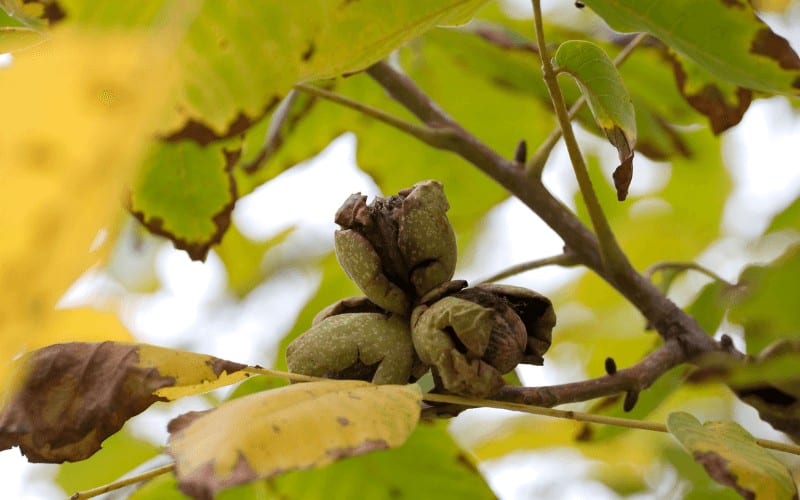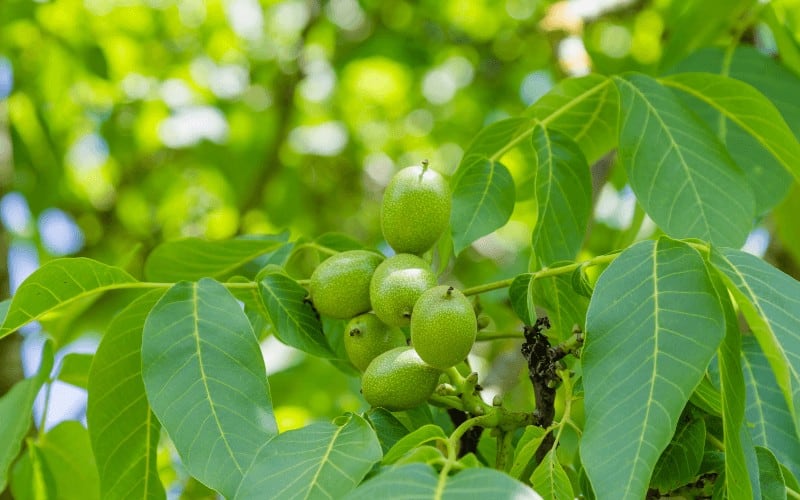A walnut tree can relatively be one of the best trees to have, so count yourself lucky having one!
This plant is super medicinal and nutritious, rich in antioxidants, a source of Omega 3s, promotes a healthy gut, reduces the risk of cancers, and many more. These advantages make the tree worth cultivating and deserving of every effort.
Irrespective of all the advantages and the need to have a walnut tree, it would seem disturbing dealing with a dying walnut tree, especially if you cannot trace how it all began.
Today’s guide would not only give possible reasons why the walnut tree is dying but will also equip you with practical tips on how to save a dying walnut tree.
Table of Contents
What To Know About Walnut Trees
There are so many varieties of walnut trees, the most common of them all are black walnut and English walnut trees. It would be best to understand these varieties to know your kind of walnut tree.
Its growth
Walnut trees, especially black walnut trees thrive in sandy, loose soils, along the river. They do not prefer soils that are very clayey or sandy, it would preferably go for alkali loam, but if the soil is too sandy then mixed with peat or any other organic matter is recommended.
Note: walnut trees do not fit well in compacted soils as this stunts their growth.
There are so many reasons why your walnut tree might be dying, but it should be able to show certain signs.
Let’s look at some of these signs of a dying walnut tree:
Signs Of a Dying Walnut Tree

Have you tried pulling back the bark, but it is already peeled? Exposing the cambium layer and it pulled back around the trunk it is girdled, this is a sign that it is either on the verge of dying or dead entirely.
Usually, a tree cannot survive unless the cambium layer can provide water and nutrients from its root to the tree.
Also, a dead cambium forms a fungus called "cankers," which is a common disease for some trees.
This fungus is so lethal to walnut trees and if these symptoms should depict, chances are; it has proceeded to a point where the tree might not be saved again. It would kill the walnut tree if this continues.
This plant is prone to diseases such as anthracnose, so your walnut tree may be dying due to disease or pest infestation, brown leaves or yellow-spotted leaves are signs, cankers include black, sunken spots on the bark.
And if the cankers have succeeded in girdling the trunk it would prevent nutrients from reaching the root which could lead to death.
Brown, dry wood indicates the twigs and branches are dead, however, it might not be dead entirely.
Observe the color of moisture content of the twigs at close range. Dead trees have grey or brown twigs. These signs would lead to you figuring out how to save your dying walnut tree.
Why Your Walnut Tree Is Dying
In one way or the other, you might have contributed to your walnut dying, perhaps unintentionally in a bid to be supportive.
- Exposure to sunlight: Walnuts might be light-demanding plants and would require full sun for perfect growth, but a full dose of the sun exposes your walnut trees to burn which affects the leaves and the entire tree. When they dry they drop leaves.
- Overwatering especially established walnut trees would leave your tree susceptible to insects or this disease that would kill it entirely.
- You may have weeds and grasses around your tree, and this has contributed to your walnut trees dying. This would suffocate your walnut tree since it is competing with the weeds for space, breath, moist and nutrients, more so these weeds and grasses attract insects like aphids, caterpillars, and spider mites.
- You might have unintentionally sprayed a product containing glyphosate, which is a herbicide that kills the plants.
- Maybe you have left it in sandy or clayey soil without mixing peat and this also has affected your walnut tree.
How to Monitor The Health Of Your Walnut Tree
Perhaps you are skeptical about your tree, then let's do some checking together.
To check your twig, slightly bend it while it is still on the tree but do not fold it, it could damage the living twig. Dead twigs wear off effortlessly, live twigs, however, would bend and straighten immediately left.
Repeat the process on the other branches and if the tree is not affected, but one or two branches are, consider removing them whilst there is time!
Scrap a twig with a small pocket knife to reveal the layers beneath the bark. Dead or dying twigs would be grey or brown inside, however, a living tree has a green cambium beneath the outer bark, and on the inside would be a green, white, or cream color.
Furthermore, observe the color and moisture content of the twigs. Dead trees have grey or brown twigs while living twigs are often green, tan, or purple.
How to Save a Dying Walnut Tree

Having known the problems and factors of a dying walnut tree, administering solutions would not be a problem.
First sorting out the sand make sure it is fertile, plant your walnut tree on a fertile, well-draining soil that receives full sun to partial shade. Mix the soil if they are too clayey or sandy with organic matter.
Be sure to water your walnut tree adequately, water the young walnut tree once a week from spring to late summer. Water 3 to 5 gallons of water each irrigation for the first trimester.
During dry periods, your tree should receive thorough soaking are least once a week, result shows you use between 42 and 58 inches of water each season depending on the soil and weather.
Nut trees generally require regular, nitrogen for growth, and your walnut trees are no exception! Potassium and phosphorus can be added, but double the nitrogen.
The ratio of 20-10-10, 30-15-15 whatever the case might be, please get the double of nitrogen.
Your walnut trees love light as they are light-demanding plants, but preferably six to eight hours of sunlight should suffice.
Note: you would have to be consistent with these solutions to get your desired results.
If you have more than one walnut tree in your garden and one of them is proven infectious and somewhat dead to avoid risking the other's burn and bury the infected one. Leaving them can be ominous and destructive to your garden literally.
Note: This plant would remain stunt once it has been infected, reviving it might seem impossible, but if your hope is still high, contact experts in the field.
Further tips
If you are not able to decipher, if it is dying or not, let your tree cycle through another growing season, before removing it.
Make sure to prune your walnut tree in the winter dormant season before the leaves drop.
Cut out any dead, damaged, or diseased limbs and thin out clustered areas to let sunlight reach the leaves.
Read Also:
- How To Revive a Plant That Died From Overwatering
- When To Prune Forsythia Plant
- How To Remove Overgrown Bushes
Conclusion
Saving a walnut tree should not be tacky, remember not to apply every information gotten from many sources as too many cooks spoil the broth. First, identify your problems, then you can deal with them by administering the necessary treatment provided in this article.
To not fall off the hook try following the procedures and be sure to save your walnut.
Hopefully, this helps with the challenging question “how to save a dying walnut tree”
You have a great time saving it!




